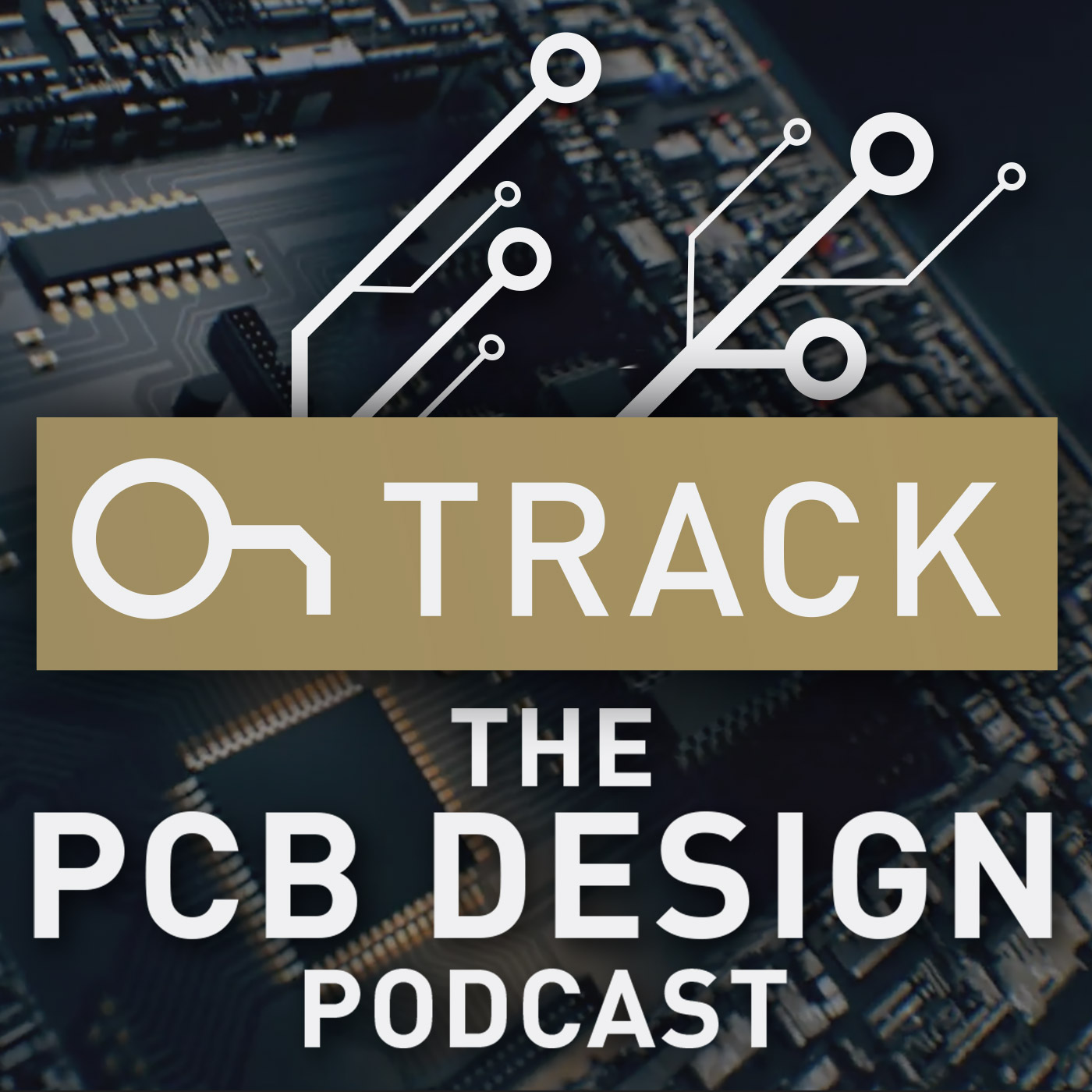Episodes

Wednesday Oct 19, 2022
Supply Chain Strategy for PCB Designer
Wednesday Oct 19, 2022
Wednesday Oct 19, 2022
Electronic parts shortages coupled with inflation has been affecting the electronic industry globally. Chris Cain our guest for today’s episode is a supply chain consultant and former VP at Keysight working on supply chain and supply chain products.
Chris will share with us his 37 years of experience and strategies to overcome electronic part shortages.
Show Higlights:
- Chris Cain briefly describes what supply management is, and his role as a consultant.
- Chris explains what it means to tap into the “scale for the larger ecosystem” of electronic providers
- Find alternatives and make some design adjustments where is possible
- Look for parts that are very scalable like memory parts and FPGAs
- Modular approach or designing for modules may also allow designers to have some flexibility
- If you can't get the parts, you can't ship your working design–having an insight into what’s coming in the supply chain could help designers in their decision making
- It pays to spend a little time keeping up with groups like IPC which does the groundwork of looking up the industry and what they think is coming
- Chris warns designers about silk-screened sand, he added “never pay, until you verify”
- Moving towards an open source model, Zach mentioned a recent article on All About Circuits which talks about companies transitioning their chip architectures to RISC-V to help them overcome some of these supply chain issues
- What is supply chain resilience?
- Fuel costs push up the cost of everything else it's related to and it's essentially an inflation driver
- Avoid buying three year supply of parts, it’s smarter to focus on design flexibility and overall sourcing flexibility
- What are the challenges involved with raw materials supplies for assembly?
- The dark scenarios, the dark side, the disaster scenarios
Links and Resources:
Connect with Christopher Cain on LinkedIn
Watch a related Podcast episode: The Benefits of Diversifying PCB Industry Supply Chain
Read Chris Cain’s Latest Article: Maximum Usage to Improve Supply Chain Resiliency
Connect with Zach on LinkedIn
Full OnTrack Podcast Library
Altium Website
Claim the special offer for Podcast listeners only
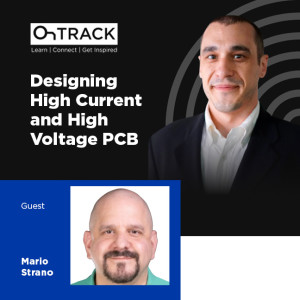
Sunday Jul 17, 2022
10-Ounce Copper PCBs and Design Library Migration
Sunday Jul 17, 2022
Sunday Jul 17, 2022
When you hear about 10-ounce copper PCBs, high current and high voltage come to mind. In this episode, we will have a deep dive discussion on designing heavy power boards with Mario Strano. Mario is the senior PCB designer at Nikola and also president of ECAD Central. He will share with us his 16 years of experience in PCB design and the migration services he provides through ECAD Central.
Watch this episode or listen on the go. We’ve touched on many other interesting topics, such as setting up clearance and creepage rules and a 57-ounce copper board.
Altium 365: Where the World Designs Electronics
Show Highlights:
- Mario’s background and professional path as PCB Designer and Component Engineer
- He is currently the only PCB designer at Nikola
- His expertise includes but is not limited to designing 10-ounce copper boards, real heavy power boards, HMI boards, human-machine interface boards
- Setting up creepage and clearance rules for heavy copper was a challenge to Mario during his transition from SQL Semiconductor to Avnet
- Mario and Zach discuss more 10-ounce copper PCBs
- Zach was amused to hear about Taiyo Kogyo’s 57-ounce copper
- The Japan-based company developed proprietary processes that allow them to do things like Bus Bar Embedded PCB
- Mario briefly shares his experience as a component engineer at Avnet for six years
- The two discuss the tantalum capacitor shortage in 2018 and compare it to the current semiconductors shortage, which started in 2020
- How is the supply chain shortage affecting PCB designers, and how are they working around it?
- ECAD Central, an Altium 365, Concord Pro, and Altium NEXUS Database service provider – setup and configuration, database migration
- Mario compared migrating data to “like moving mountains”
- Is mirroring parts between two systems possible? Mario explains what can be done. Definitely not a simple drag and drop operation, though!
Links and Resources:
Connect with Mario Strano on Linkedin
Visit the ECAD Central website
Learn More about Taiyo Kogyo and their 57-ounce copper boards
Watch related podcasts:
Easily Find Electronic Components for Your Next PCB Design
The Benefits of Diversifying PCB Industry Supply Chain
Connect with Zach on LinkedIn
Full OnTrack Podcast Library
Altium Website
Get Your First Month of Altium Designer® for FREE

Tuesday Sep 14, 2021
Software-Driven Hardware Development
Tuesday Sep 14, 2021
Tuesday Sep 14, 2021
Build and develop workflow in a "lightweight" way.
Kyle Dumont and Valentina Toll Villagra, the founders of AllSpice are passionate about taking hardware development to speed through the cloud. Their ultimate goal is to bring people together, bring the system together, and automate repetitive processes. Watch or listen on the go. You don't want to miss this.
Altium 365: Where the World Designs Electronics
Show Highlights:
- Introductions
- Kyle Dumont’s background in product development
- Valentina Toll Villagra background in Mechanical Engineering at Amazon -- machinery and logistics
- How Allspice got started?
- Kyle’s experience as an electrical engineer -- software principles applied to hardware
- Improve the product cycle
- Keeping up with the change in speed and expectations
- The need to build a dedicated and specific tool that will allow engineers to collaborate remotely
- Why the name ‘AllSpice’
- Software-driven Hardware Development: What do you mean??
- Hardware (HW) today is what Software (SW) was ten years ago (in-person design review)
- SW is having a growing influence on HW development
- Shared practices, tools, timelines, etc.
- Need for integrated development.
- Immediate application/solution: Component Shortages
- Replacing components takes more than updating a part number
- It’s more important than ever to validate components quickly and effectively.
- Our most successful customers use an 8-step process (read the blog post)
- BOM Check
- Identifying OOS components
- Finding a replacement
- Updating the component library, and the design
- Validating the component characteristics
- Verifying component footprints
- Checking for unintended changes - this is the one that gets you
- Releasing the updated design
- Providing flexible development infrastructure
- Moving things digitally--in the cloud
- Teams are more distributed (geographically and in terms of skills)
- Faster design cycles
- What’s driving faster design cycles?
- What is the impact? (New requirements/old tools and methods)
- AllSpice Hub features that we didn’t anticipate
- Where are we going...Continuous Integration, bring people together, bring the system together, and automate repetitive processes
Links and Resources:
Visit AllSpice Website
Kyle’s LinkedIn profile
Valentina’s LinkedIn profile
AllSpice’s LinkedIn page
Read the blog: Keeping up with the Chip Shortage
Demo design review
Full OnTrack Podcast Library
Altium Website
Download your Altium Designer Free Trial
Learn More about Altium Nexus
Altium 365: Where the World Designs Electronics
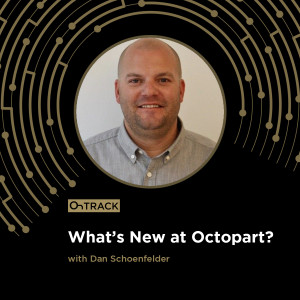
Wednesday Jul 07, 2021
Supply Chain Intelligence from Octopart
Wednesday Jul 07, 2021
Wednesday Jul 07, 2021
Octopart, the premier data platform for electronic components, handles at least 5 million unique searches every month. In this episode, together with Daniel Schoenfelder, head of Octopart, we will dive into the importance of having reliable access to electronic part data.
We specialize in democratizing electronic component data and helping engineers, designers, and buyers make better decisions faster. - Daniel Schoenfelder, head of Octopart
Altium 365: Where the World Designs Electronics
Show Highlights:
- Introduction. The impact of the pandemic on Octopart
- Octopart’s vision: “Democratization of Information”
- New features: BOM tool in Octopart and Altium 365
- Embeddable Experience
- Global Price and Availability
- Inventory alerts
- Comprehensive Part Data - Core User Experience
- Lifecycle on Octopart.com
- CAD Models
- Lead time
- How Octopart fits into NEXAR—underpinnings of what’s available in the supply domain
- Shortages, State of Industry—saturation and duration
- Search Volume: 20 million unique users’ search on Octopart
- Learn more about Nexar—Octopart is a core component of Nexar
- What is on the horizon?
- Centralized community—very curated and engaged user community
- Solving industry-wide problems
- Octopart.com a destination for CAD
Links and Resources:
Dan’s LinkedIn Profile
Octopart.com
EDS Show August 2021 in Las Vegas at the Mirage
Semiconductor Industry Association Website (SIA)
Podcast: What is Nexar?
Nexar Website
Full OnTrack Podcast Library
Altium Website
Download your Altium Designer Free Trial
Altium 365: Where the World Designs Electronics
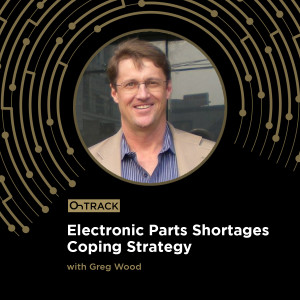
Thursday Jun 03, 2021
Component Shortages Report from IHS
Thursday Jun 03, 2021
Thursday Jun 03, 2021
Joining us in this episode is Greg Wood of IHS Markit, a global information company serving financial, automotive; energy and engineering; product design and manufacturing industries.
Greg will share his 20 years of experience in the electronic parts management space to help design engineers like you cope with the current electronics components shortage. Stay tuned for tips and ideas to expand your opportunities to acquire inventory.
Altium 365: Where the World Designs Electronics
Show Highlights:
- Daily Distribution/Manufacturing information provided to IHS (Audit/Clean up reports)
- Aggregate counts lead times remaining for active parts for part types
- Average lead times for counts, regular basis—since covid
- Presentations: spreadsheet, graphs, trends
- Monthly report on lead times, pricing, inventory quantities (products this summer)
- Webinars
- What’s driving component shortage?
- “The Crazy” Findings, learnings, stories—use cases.
- Coping strategy for design engineers
- Impact on overall business: previous post acquisitions. previous versions cross-reference, replacement reduce time by at least 50%
- Significant impact on automotive industries—shocking impact!
- Where are we now
- Big move to fabrication
- TSMC: Agreed to 100 Billion to increase capacity
- What do I need to do NOW?
- Procurement advise
- Pay close attention to available products
- Heavy investment on infrastructure: 50 Billion in incentives
Links and Resources:
IHS Markit Webinar Page
IHS Website
Electronic Components Shortages, Insights from John Watson
Design Survival Guide in a World of Parts Shortages
SnapEDA Google for Electronic Components with Natasha Baker
Full OnTrack Podcast Library
Altium 365: Where the World Designs Electronics
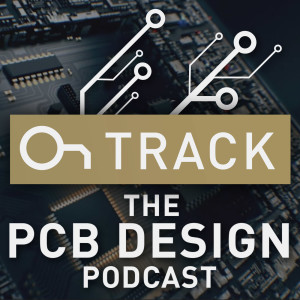
Tuesday Jan 08, 2019
Electronic Components Shortages, Insights from John Watson
Tuesday Jan 08, 2019
Tuesday Jan 08, 2019
Electronic Components Shortages, or part shortages are so big that it impacts nearly every aspect of electronics design and manufacture. Lead times continue to rise no matter how fast parts are being produced. It is just not possible for production to catch up. The reality of this current shortage means it’s time to be innovative, and guest John Watson has some ideas to help including an expert tip Altium Designer users can put to good use. (Hint: ActiveBOM can help!) Listen in to get background on the electronic component shortage, what pro PCB designers are doing to address the concern proactively and stay ahead of PCB component shortages.
Show Highlights:
Shortages first started with capacitors - specifically with multi-layer ceramic capacitors (MLCC) MLCCs - 3 trillion created a year but the supply is still not meeting demand
This is a major crisis in the industry and its spreading
The part shortages are so big, it impacts every aspect. Shortages affecting: Board sensors, MOSFETs (metal-oxide semiconductor field-effect transistors), Resistors and Transistors. Previously unaffected supply chain areas are now being affected.
No matter how fast these are being produced, not possible for production to catch up.
There are three industries driving the high demand that is leading to part shortages:
- IoT - estimated 20 billion new IoT devices in next few years
- Mobile phone - 1.5 trillion mobile phones in next year. 1,000 capacitors in each phone.
- Automotive - 2,000 - 3,000 capacitors in regular / 22,000 capacitors estimated in electric car - as newer technologies are being pulled into regular automatic cars, just think of all the electronics i.e. safety features, automatic parking, etc.
New automotive organization:
AEC - Automotive Electronic Council is putting out standards that will be required for their components. Why? Because...
More rigorous components are needed in order to perform in harsh environments.
Almost 50% of those components have fallen out, or failed, to meet their tests.
On the component / part manufacturing side:
Converting lines from large components to smaller ones because not many people buying them.
Manufacturers shutting down entire lines so they can produce more popular sizes.
On the vendor side:
Vendors have moved towards part allocation - big companies get first in line for parts.
“You can only buy parts with if you have bought with us in the past year” - this is allocation.
Once a company is in allocation, they begin to stockpile components.
What kind of lead times are most common right now:
Short lead time - 16 weeks
Medium - 32 weeks
Long - 80 weeks
What makes this part shortage so different?
Mainly a market driven shortage, that cannot be pinpointed to a specific material shortage
It’s almost an ‘emotional shortage’ where people may be hoarding more than they need.
The extended duration of it is also unlike previous shortages.
It’s a scenario where the market compounded onto itself with its reaction to it.
HOT TIP: The next big thing is Broadband Satellite. SpaceX and low flying satellites to make everybody wireless. This is huge, it’s a lot of hardware.
Component Shortage Hacks to get through the Crisis:
- Overall, be as proactive as possible.
- Evaluate common design guidelines and step out of them. For example, can we change the norm values, parameters and tolerances? It doesn’t always require the most stringent guideline, there is room for adjustment, depending on the type of device and requirements.
- Be proactive, for example run your schematic through ActiveBOM and get flags on what components are not recommended. Don’t wait until layout, do it early on.
- You can also use Octopart, there are other free services.
- Leverage your procurement organization, give them the heads up with difficult components so they can be aware of the situation in advance.
- Create multiple footprints for designs.
- No single sourcing for components, don’t get tied into a single organization.
Where do you source parts or find out about availability during the shortage?
- Read the quarterly reports to get the latest, look at the numbers, watch the trend.
- Keep aware of the issues i.e. part availability reports
- Texas Instruments also has a lot of information.
PCB Component Shortages and using ActiveBom:
“ActiveBOM came out just in time. It has been the go to tool for us.”
Now we run legacy products through ActiveBOM.
Links and Resources:
John Watson Podcast on PLM and Library management
OnTrack article about Part Shortages
Watch John Watson clips on Youtube
Download the latest Altium Designer 19 today.

